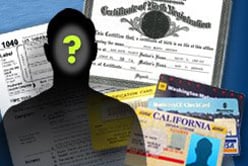-resized-600.jpeg?width=402&height=225&name=misclassification_(1)-resized-600.jpeg) A new California law has added to the growing government arsenal of weapons targeting misclassification of workers. Senate Bill 459 provides for fines of between $5,000 and $25,000 on employers who misclassify workers as independent contractors.
A new California law has added to the growing government arsenal of weapons targeting misclassification of workers. Senate Bill 459 provides for fines of between $5,000 and $25,000 on employers who misclassify workers as independent contractors.
Gov. Jerry Brown signed the bill into law in October, only weeks after the U.S. Department of Labor announced a memorandum of understanding with the Internal Revenue Service that, Labor Secretary Hilda Solis said, would bring the agencies together "to end the practice of misclassifying employees." Under the accord, the agencies will share information and coordinate law enforcement.
Employment law experts say the heightened scrutiny at both the federal and state levels means employers have to make sure they have properly classified their workers—even if it is still not completely clear how they can distinguish between who is an employee and who is an independent contractor.
"It really comes down to a very fact-specific inquiry," says E. Jason Tremblay, a partner at the law firm of Arnstein & Lehr in Chicago. "Unfortunately, there is no one test that all the agencies use."
While the IRS provides a list of factors divided into three categories—behavioral control, financial control and relationship of the parties—the Labor Department uses the "economic" reality standard.
According to the U.S. Government Accountability Office, there are at least 10 million workers in the United States who are classified, rightly or wrongly, as independent contractors. The Labor Department estimates that up to 30 percent of companies nationwide misclassify their employees, and the IRS has estimated that misclassification deprives the federal Treasury of about $2.7 billion a year in unpaid tax revenue.
Employers withhold taxes from employee paychecks but independent contractors pay their own taxes and are not covered by wage and hour and anti-discrimination laws, workers' compensation and unemployment insurance programs.
The IRS announced last year that it would audit 6,000 businesses to reduce worker misclassification. Employers found to have misclassified workers can be liable for payment of back taxes, unpaid Social Security and Medicare contributions, and unpaid unemployment insurance and workers' compensation premiums, along with applicable penalties and interest.
The crackdown is, at least in part, an attempt to close the "perceived tax gap," says J.D. Ivy, managing director of Alvarez & Marsal Taxand in Dallas, which provides tax advice and other consulting services to employers. The IRS, he notes, is "requesting more detailed information about these [classification] issues. They're digging deeper and asking more questions."
Just about any employer that employs—or has employed—independent contractors can expect to be answering questions. As a proactive antidote to possible liability, experts recommend that employers conduct a rigorous assessment of whether their independent contractors are properly classified.
"It's very important for employers to take a look at all their positions," says Kandice Bridges, senior director at Alvarez & Marsal Taxand.
Given the unclear legal standard, an assessment can be easier said than done. But Ivy suggests using the IRS factors to determine employee status while Tremblay has developed a composite formula that includes such questions as: "Does the worker furnish his or her own tools and equipment?" and "Does the worker generally set his or her own hours?"
"The most important thing is to go through the classification process," Ivy says.
If an employer goes through such a process and still misclassifies a worker, Tremblay says, a good-faith defense is generally "not going to get you off the hook. All employers are presumed to know the law." But in California, the new law penalizes only "willful" misclassification, defined as "avoiding employee status for an individual by voluntarily and knowingly misclassifying that individual as an independent contractor."
"If you made a good-faith attempt at compliance, it's unlikely the California law would apply," Ivy says.
Other options for employers include the IRS' partial amnesty program, which may apply to those who voluntarily reclassify independent contractors as employees for future tax years. But Tremblay says some employers are wary of the amnesty program.
"There are so many unknowns" for employers, Tremblay says. "Is an IRS amnesty going to subject them to penalties by state agencies? It's a big risk." Another question is, if an amnesty application is denied, where does that leave the employer?
Ivy also suggests that employers consider using employee leasing or other staffing alternatives to perform jobs previously assigned to independent contractors. "It reduces exposure a lot in terms of being misclassified," he says. "That could always be an alternative."
But whatever happens, employers may still be navigating murky waters.
"The reason why this is such a hot issue," Tremblay says, "is no one really does have the answers. Different agencies have different tests so you can't really be certain that what's good for one is good for another."
By: Matthew Heller

















